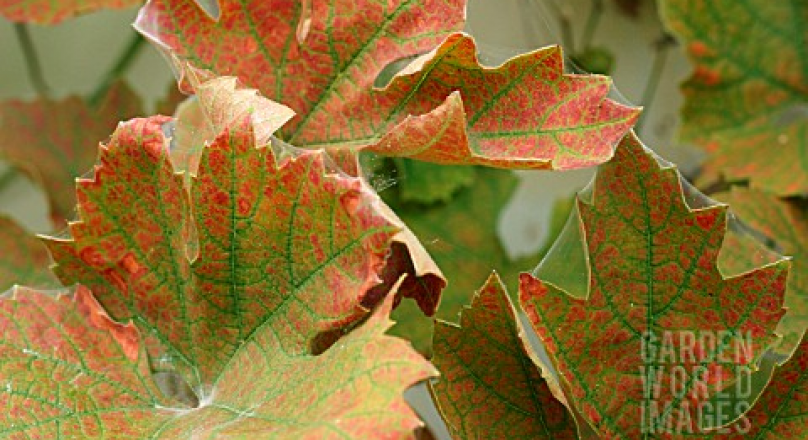Results for ""
Introduction
Red mites (Panonychus ulmi), also known as European red mites, pose a significant threat to grape cultivation. These tiny pests can cause severe damage to grapevines, affecting both the quality and yield of grapes. Traditionally, synthetic pesticides have been used to control red mite infestations, but these chemicals pose environmental and health risks, and over time, mites can develop resistance. A sustainable, organic approach to controlling red mites, combined with the power of Artificial Intelligence (AI) and Machine Learning (ML), offers a modern and effective solution to this challenge.
By integrating AI and ML technologies with organic pest management practices, grape growers can achieve efficient, real-time monitoring and precise control of red mites, enhancing the health of the vineyard ecosystem while promoting sustainability.
1. Monitoring and Data Collection
The first step in controlling red mites organically is effective monitoring. AI and ML can transform traditional pest monitoring systems into intelligent networks that detect and manage infestations more efficiently.
1.1 Use of Sensors and Cameras
High-resolution cameras and sensors installed in grape vineyards play a critical role in monitoring the presence of red mites. These cameras capture detailed images of grapevine leaves, while sensors record environmental data such as temperature, humidity, and soil moisture, which influence mite behavior.
The collected data is transmitted to an AI-powered system that analyzes it in real-time. By comparing the current images with a database of known red mite infestations, AI can detect early signs of mite presence, even when their numbers are still low. This allows for timely intervention, preventing widespread infestations.
1.2 AI-Powered Image Recognition
AI algorithms, specifically trained for image recognition, can identify red mites by analyzing visual signs of mite activity on grapevines, such as leaf discoloration, webbing, or damage. The system automatically alerts farmers when red mites are detected and provides an infestation severity report.
1.3 Environmental Monitoring
Red mite populations are influenced by environmental conditions. By deploying IoT (Internet of Things) devices that monitor temperature, humidity, and soil moisture, farmers can gather comprehensive data that AI systems analyze. For example, high temperatures and dry conditions can accelerate mite reproduction, leading to rapid population growth. This environmental data helps AI predict the most likely periods for mite outbreaks, allowing farmers to apply organic treatments in advance.
2. Predictive Modeling Using AI and Machine Learning
Artificial Intelligence and Machine Learning enable the creation of predictive models that forecast red mite infestations by analyzing past data and environmental trends. These models become increasingly accurate over time as they learn from historical infestation data and vineyard conditions.
2.1 Machine Learning for Infestation Prediction
By using machine learning algorithms, AI systems can recognize patterns in infestation cycles. Data on previous outbreaks, combined with weather conditions and vineyard management practices, allows the AI to predict when and where mites will likely appear. These predictions enable farmers to take proactive steps to control red mites, applying organic treatments before mite populations become problematic.
2.2 Weather and Climate Data Integration
Machine learning models incorporate real-time weather and climate data, enhancing their predictive accuracy. Red mites are particularly active during dry, warm conditions, and AI can process local weather forecasts to provide farmers with real-time alerts and suggest the best times for organic interventions.
3. Organic Control Methods
Once red mites are detected, AI can recommend a range of organic control methods that are both effective and environmentally friendly.
3.1 Biological Predators
Biological control is a key component of organic pest management. Phytoseiulus persimilis, a predatory mite, is an effective natural enemy of red mites. AI systems can optimize the release of biological predators by recommending when and where to introduce them, based on infestation severity and environmental conditions.
For instance, after AI detects a localized mite outbreak, it can suggest releasing Phytoseiulus persimilis in that specific area. This targeted approach minimizes the use of external interventions while maximizing biological control.
3.2 Organic Sprays
AI systems can also recommend the application of organic sprays like neem oil, sulfur, or garlic extracts. These natural treatments are effective in controlling red mite populations without harming the environment or beneficial insects. AI can calculate the optimal dosage and timing for spray application, ensuring that treatments are both efficient and sustainable.
The system can suggest customized organic solutions based on the specific vineyard’s microclimate, infestation level, and grape variety. For example, neem oil, which disrupts the mite’s life cycle, can be applied at the precise intervals determined by AI to ensure maximum impact on the mites while minimizing harm to the grapes.
3.3 Companion Planting
AI models can recommend companion plants that naturally repel red mites, enhancing organic pest control. Plants like garlic, chives, or marigold can be strategically planted between grapevines to reduce mite activity. AI systems can suggest the best plant combinations for different vineyard setups based on environmental factors and vineyard layout.
4. Autonomous Drones and Robots for Organic Treatment
Automation further enhances the application of organic solutions in grape vineyards.
4.1 Drone-Based Monitoring and Spraying
Drones equipped with AI-powered cameras can fly over vineyards to scan for red mite infestations. These drones can autonomously detect hotspots where mite populations are high and can even spray organic solutions like neem oil or sulfur. This approach reduces the need for manual labor and ensures precise application, targeting only affected areas.
4.2 Robots for Targeted Treatment
Small, AI-guided robots can navigate through the vineyard, applying organic treatments like essential oils or releasing predatory mites in specific areas. These robots can work day and night, providing continuous monitoring and treatment without disturbing the vineyard ecosystem.
5. AI-Based Decision Support System for Farmers
A farmer-friendly AI-based decision support system (DSS) can be developed to integrate all data sources—environmental conditions, pest monitoring, organic treatment options, and vineyard history.
5.1 Real-Time Insights
This DSS can provide real-time insights through a mobile app or desktop dashboard. Farmers can receive alerts about potential red mite outbreaks, recommendations for organic treatments, and suggestions for biological control. This system enables farmers to make informed decisions, reducing reliance on synthetic pesticides.
5.2 Continuous Learning
The AI system continually learns from the outcomes of different organic treatments. If a specific organic solution is more effective in a certain climate or grape variety, the AI will incorporate this data to improve its future recommendations, offering farmers increasingly tailored and effective solutions.
6. Remote Sensing and Data Analysis
6.1 Satellite Imaging and AI Analysis
Satellite imaging can complement on-ground sensors by providing large-scale data on vineyard health. AI can analyze satellite images to detect changes in vegetation that may indicate red mite infestations. By combining satellite data with ground-based sensors, farmers can get a holistic view of their vineyards and take preventive measures against red mites.
7. Educating Farmers Using AI Tools
7.1 AI Chatbots and Virtual Assistants
AI-powered chatbots and virtual assistants can be integrated into mobile apps or websites, providing farmers with instant advice on organic red mite control. These tools can answer questions about natural treatments, biological controls, and environmental factors in real-time, empowering farmers with knowledge and resources.
Conclusion
Combining organic methods with AI and Machine Learning represents a forward-thinking approach to controlling red mites in grape cultivation. By using precision farming techniques, predictive modeling, and automation, farmers can reduce red mite populations without resorting to harmful chemicals, promoting sustainable grape farming practices. AI’s ability to analyze real-time data and learn from past outcomes ensures that organic pest management methods become increasingly effective, enabling a healthier and more resilient vineyard ecosystem.
This AI-powered organic solution not only protects grape yields but also supports the broader goals of sustainability, environmental health, and biodiversity. The future of viticulture lies in intelligent farming—where cutting-edge technology works in harmony with nature.
Sources of Article
NA






